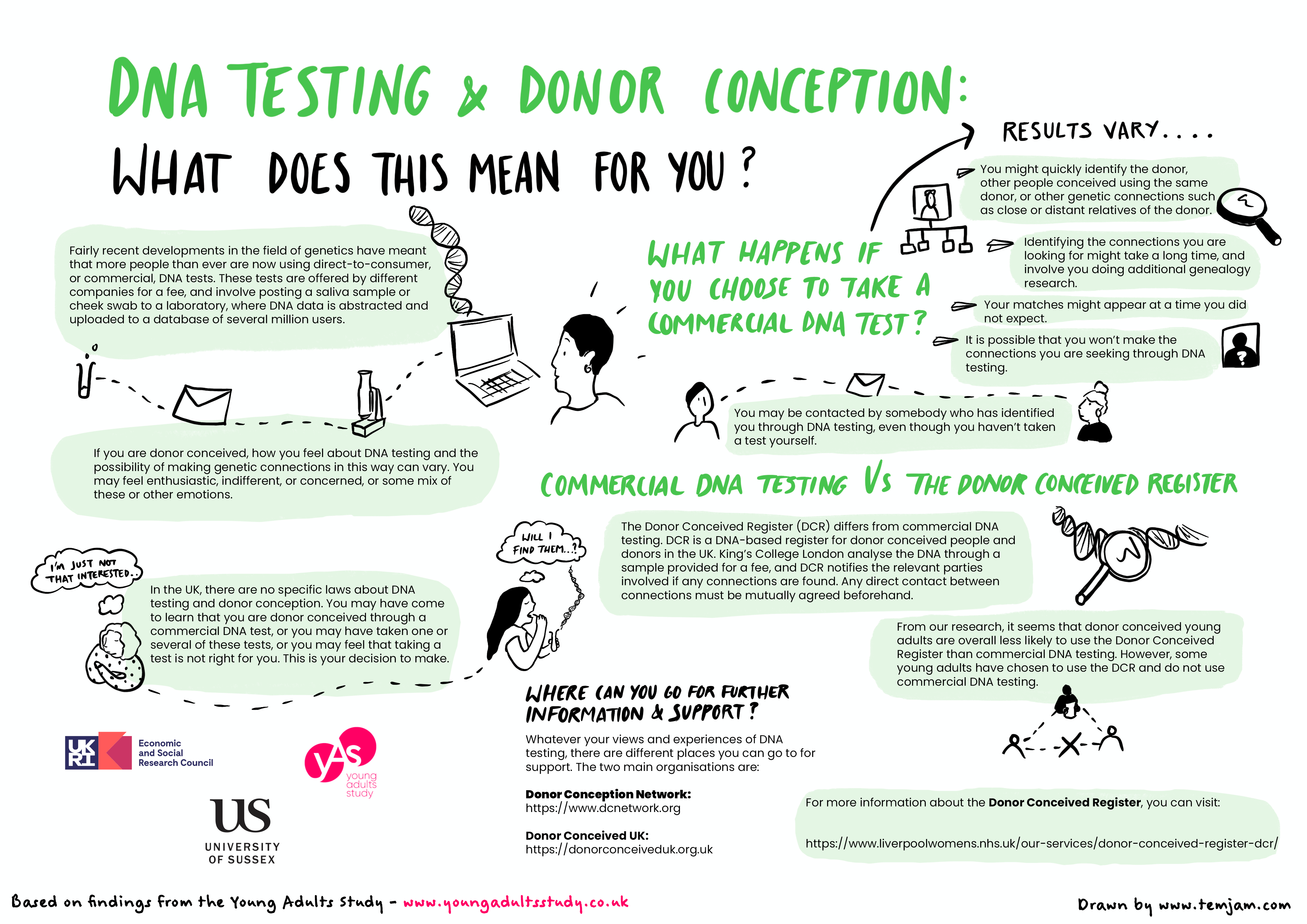You may have seen that DNA testing kit company 23andMe filed for bankruptcy protection in the United States in March 2025. The HFEA does not regulate home DNA testing and matching services.
In May 2025, the UK Information Commissioner’s Office called for 23andMe customers’ sensitive personal data to be protected.
You can read 23andMe’s FAQs on their website.
Home DNA testing and matching websites have implications for donor-conceived people. Using one of the home DNA tests these sites offer plus opting in (or not ‘opting out’) of their ‘matching services’, could mean that your donor, or donor-conceived genetic siblings become identifiable to you and vice versa. It’s also possible that a donor-conceived person might be identified by inference, if they have a close genetic relative using home DNA testing and matching services. Even if the donor-conceived person has not used such a service themselves, the information from the matching service may be able to be combined with other publicly available information about the relevant person, and their donor conceived status and/or their identity could be possible to infer.


